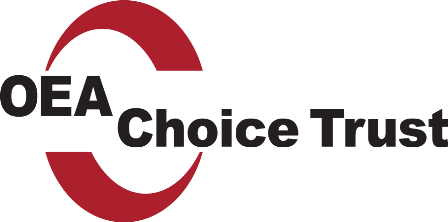When creating a School Employee Wellness (SEW) program, it’s important to survey all staff before diving into program planning!
Employee engagement is key to a successful wellness program. One of the best ways to get continued engagement from staff is to tailor the program to the local needs of your organization and employees.
Engage employees from the start to build a sense of ownership and investment in the program. Invite them to join the wellness team or help with certain elements of the program.
A health and well-being needs and interest survey can help the wellness committee determine which topics and wellness opportunities staff want most, their readiness to participate in a SEW program and what barriers might get in the way of participation.
Gathering meaningful data
When gathering data, it’s valuable to know how the information gathered will be used. It can be disheartening for staff to take time to complete the survey only to feel their input wasn’t considered. Staff answers should help the wellness committee make decisions about the program.
Consider how answers to the following questions could help develop an engaging program:
- When are staff available to participate in wellness opportunities?
- What types of resources, activities or opportunities do staff want?
- How do staff want to stay informed about the program?
- Which elements of well-being (physical, social, emotional, purpose, financial) are currently most important to staff?
- What would encourage, support or incentivize staff to participate in wellness opportunities?
- What changes to the workplace would inspire and encourage staff to spend time on their well-being?
OEA Choice Trust’s Staff Wellness Needs and Interests Survey is a free, customizable resource that wellness committees can use to gather staff input.

Successfully administering a survey
Gathering data from busy employees isn’t easy, and you’ll want a high enough response rate to understand what the majority of staff want and need from your program. For this reason, it’s important to consider how the survey will be administered.
In order to get the richest data, try to ensure everyone has an opportunity to take the survey. Consider these tips for successful survey administration:
- Work with leadership to carve out time during staff meetings or all staff in-service days to complete the survey.
- Design a survey that takes up to 15 minutes to complete.
- Protect confidentiality and assure anonymity when staff complete the survey. This not only increases response rates, it builds trust and credibility.
- Tips:
- For any given building or department require a minimum of 5 responses to report results
- Use and share aggregate results only
- Speak to the importance of confidentiality and anonymity as part of the survey instructions
- Tips:
- Past grantees have recommended using paper versions of their survey to increase the number of transportation, facilities and nutrition services staff completing the survey. Your colleagues from these departments have limited access to computers and appreciate the opportunity to offer their feedback by using a paper survey.
Giving incentives for completing the survey increases the likelihood that staff will complete your survey. Encourage a friendly competition between worksites or departments by awarding a healthy incentive for the building with the highest percentage of staff completing the survey. Offering entry into a prize drawing is another way to increase survey completion.

Getting answers from across the workforce
One of the biggest considerations for administering a survey is how to create access to it for all sectors of the education workforce. For an employee wellness program to be inclusive, it needs to address the needs and interests of staff from different sectors of the workforce.
It’s important to create opportunities for all staff to take the survey. Think about how the following points apply to your organization:
- Language – Is there a way to translate the survey into other languages? If the survey is in English only, does your organization have a translator that can help employees complete the survey?
- Paid time – Do all staff have the opportunity to take the survey on paid time?
- Digital vs. paper – How would administering the survey only online impact who can complete it? Do all staff have the access and resources to take the survey online?
- Location – If using printed copies, how will employees turn the surveys in?
- Organizing data – Who will compile the results? Could a staff member who excels at data and calculations help? Will an online survey platform, such as Survey Monkey or Google Forms, compile results?
Using a digital version of the survey, especially if your organization already uses a program like Survey Monkey or Google Forms, can be beneficial. A digital survey can be easily emailed to all staff, and the program will collect and process the results. Some programs even create graphs and other visual representations of the results to make it easier to understand. These programs can save the wellness committee the time of tallying up answers from each individual survey.
However, convenience shouldn’t be the most important factor for how a survey is administered. If only one section of the work force responds to the survey, such as certified or licensed staff, then the results will lack the input needed to create a program that works and feels relevant to everyone.

From blog post to practice
If you’d like to use the OEA Choice Trust’s Staff Wellness Needs and Interests Survey to gather information from staff at your organization, you are welcome to do so. The Word document can be edited; you can add, remove or edit questions to tailor the survey to your organization.
When creating a survey, it’s important to consider how many questions are being asked. Striking a balance between “missing key information” and “too long” can be a challenge.
Here’s an example checklist you can use to administer a staff wellness needs and interest survey at your organization.
Checklist –
- Decide on which questions to ask
- Draft the survey
- Ask another staff member to proofread it for clarity
- Revise your survey if needed
- Decide how to distribute and collect the survey
- Decide how to communicate about the survey
- Decide how to incentivize survey completion, if applicable
- Schedule a day to analyze survey data
- Implement survey distribution
- Send a reminder about the survey
- Collect completed surveys
- Thank staff for completing surveys
- Award individual or worksite prizes for survey completion, if applicable
- Compile survey results
- Analyze survey data
- Decide how survey data will inform planning
- Share survey data with leadership and staff
Keep in mind that the time of school year can also affect survey return rate. Talking to worksite administrators and staff can help you understand if there are other pressing, timely matters that would prevent employees from completing the survey.
Though administering a survey can take a lot of time, it’s an important way to get input from school employees and develop an engaging program.

